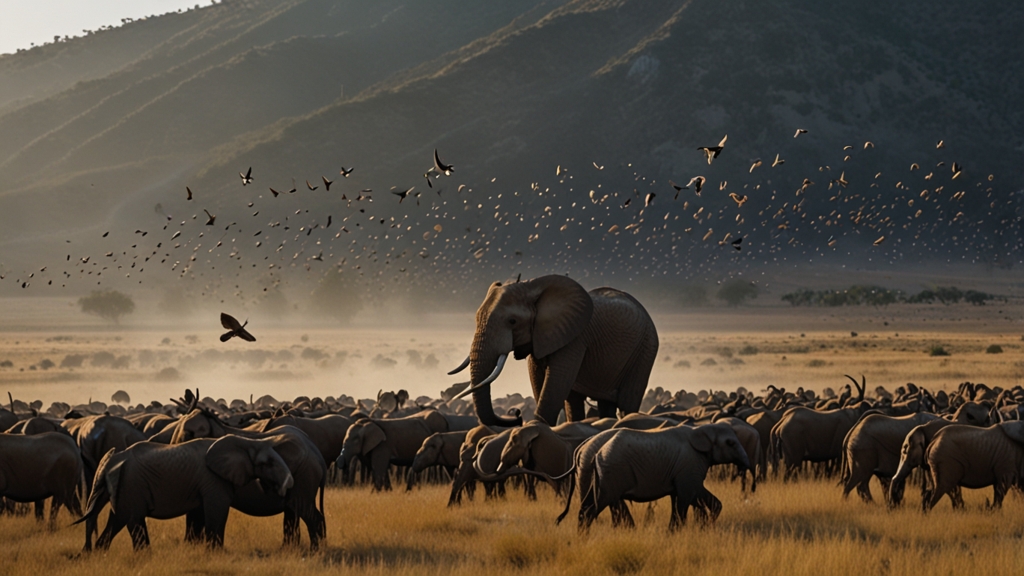Amazing Mammal Migration Journeys That Defy Belief
Mammals are often lauded for their intelligence, social structures, and adaptability. Yet, one of the most awe-inspiring aspects of these creatures is their capacity for migration. While many people are familiar with the migratory patterns of birds and marine life, mammalian migrations often remain underappreciated. These journeys not only push the limits of physical endurance but also highlight the intricate ecological balances that sustain life on Earth. Here, we look at some of the most astonishing mammal migration journeys that truly defy belief.
1. The Epic Journey of Caribou
Caribou, also known as reindeer, embark on one of the most grueling migrations in the animal kingdom. Covering distances of up to 3,000 miles annually, these resilient creatures move between their wintering grounds in the forests and their calving grounds on the tundra. Traveling through treacherous terrains and battling harsh weather conditions, the caribou demonstrate a remarkable endurance.
"The annual caribou migration is a testament to the enduring spirit of these animals. Their journey across the Arctic landscape is not only a marvel of instinct and determination but also a crucial aspect of their survival and reproduction." — Dr. Jane Goodall
2. The Unseen Marathon of Bats
When we think of migration, bats might not be the first animals that come to mind. However, species like the Mexican free-tailed bat undertake significant migrations that are nothing short of incredible. These bats travel from as far north as the United States to Mexico, covering distances of up to 1,800 miles. What makes their journey even more fascinating is their ability to fly at altitudes of over 10,000 feet and speeds exceeding 60 miles per hour.
Their journey is essential for their survival, allowing them to find the best feeding grounds and breeding sites. The bats play a crucial role in the ecosystem by controlling insect populations and pollinating plants, making their migration an integral part of natural balance.
3. Monarch Butterflies of the Mammal World: The Wildebeest
The wildebeest migration in Africa is often compared to the migratory patterns of monarch butterflies due to its sheer scale and spectacle. Every year, more than 1.5 million wildebeest, along with hundreds of thousands of zebras and gazelles, partake in the Great Migration across the Serengeti and Maasai Mara ecosystems. This circular journey spans nearly 1,800 miles and is dictated by seasonal rains that affect the availability of lush grazing grounds.
"Witnessing the wildebeest migration is like watching a natural masterpiece unfold. The synchronized movements of countless animals crossing rivers and evading predators are a powerful reminder of the interwoven complexities that sustain the natural world." — Sir David Attenborough
4. The Overlooked Journey of Gray Whales
Technically marine mammals, gray whales undertake one of the longest migrations of any mammal, covering around 12,000 miles round trip. Starting from the cold waters of the Bering and Chukchi Seas, they travel down to the warm lagoons of Baja California, Mexico, for breeding and calving. The journey back is equally arduous, especially for mothers with new calves.
What makes the gray whale's migration particularly captivating is their use of unique navigational skills, relying on the Earth's magnetic field and coastal landmarks. These remarkable navigational abilities underscore the complexity and ingenuity inherent in nature.
5. The Human Connection: Indigenous Knowledge
It's also vital to note the human cultural significance tied to these migrations. Indigenous peoples around the world have long observed and lived in harmony with these migratory patterns. For example, the Sami people of Scandinavia have traditionally followed the migrations of reindeer, a practice that is deeply embedded in their cultural heritage.
"The symbiotic relationship between indigenous communities and migratory mammals is a beautiful example of co-existence. Understanding these ancient practices can offer valuable insights into sustainable living and conservation." — Winona LaDuke, Environmental Activist
Conclusion
These astounding migration journeys of mammals reveal the profound resilience and adaptability of life on Earth. They remind us of the intricate connections that bind ecosystems together and the delicate balance that must be maintained for their survival. As we deepen our understanding and appreciation of these migrations, it becomes increasingly clear that protecting these pathways is not just an ecological necessity but a moral imperative. Let us marvel at and safeguard these incredible journeys that truly defy belief.









